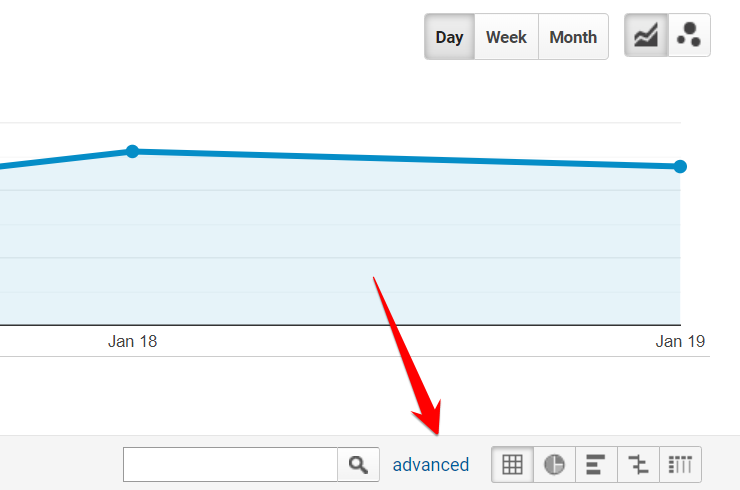Everything about In Which Order Does Google Analytics Filter Data
Table of ContentsIn Which Order Does Google Analytics Filter Data - QuestionsRumored Buzz on In Which Order Does Google Analytics Filter DataNot known Facts About In Which Order Does Google Analytics Filter DataThe 5-Minute Rule for In Which Order Does Google Analytics Filter DataWhat Does In Which Order Does Google Analytics Filter Data Do?Top Guidelines Of In Which Order Does Google Analytics Filter Data
io" is the internet site and if I go to the homepage as well as click a few other web pages like signup web page, it shows me in the real-time report popping-up as how we established in the filters. This page is the of website as well as you can see the sub-domain highlighted as.
Comparable to the previous procedure, we must produce a brand-new filter as mentioned in the last actions - In Which Order Does Google Analytics Filter Data. in this brand-new filter, I'm calling it as and I'm picking After that I'm keying the filter pattern as In this filter pattern, the pipe symbol () is consisted of to attach any other hostname that you want to include together with the other hostnames
Excitement About In Which Order Does Google Analytics Filter Data
This is how you can go examine your site and resurgence sight in real-time reports. The real-time report now shows the adjustments that you made when developing that filter. In this situation, the Broken web page describes about link of the web page i. e when the Web page URL being duplicated the exact same, leaving out reduce or any minute components.
Now produce a brand-new filter and I call it as. Choose and also choose the filter areas.

The Main Principles Of In Which Order Does Google Analytics Filter Data
The adhering to guidelines will certainly walk you with the process: Develop a new Google Spreadsheet (or open up an existing one). From the add-on description page, click the "+" in the top right corner to Visit This Link add this add-on to your spreadsheet.
Reports can be produced manually or with the assistance of the add-on's report production device. To make use of the tool, pick "Attachments" > "Google Analytics" > "Produce a New Record" from the menu bar.
The device is indicated to help obtain you started as well as offer you with the information you may not know off the top of your head. The remainder of the fields will certainly need to be gotten in by you.
An Unbiased View of In Which Order Does Google Analytics Filter Data
It can be a sheet in the spreadsheet you're currently in, or a different spread sheet altogether (as long as you have modify accessibility to that spreadsheet). To print the outcomes to a various spread you could try these out sheet copy the spreadsheet URL and also paste it right into the cell to the right look at here of the "spreadsheet-url" parameter.
This opens a report scheduling dialog where you can turn organizing on and also off, and also set how often your record will certainly run. To turn scheduling on, check the box labelled "Enable records to run automatically." When scheduling is enabled you can utilize the select dropdown to control the moment and frequency.
When organizing records, make certain there is lots of time between when you produce the routine and also when the schedule is supposed to run. Name Summary This is the report name. It will certainly also be the name of the sheet where the record data is written.
As an example, the adhering to expression returns the last day of the previous month: =EOMONTH(TODAY(), -1) Completion date for fetching Analytics information. Demands can specify an end day formatted as YYYY-MM-DD, or as a loved one date (e. g., today, yesterday, or Ndays, Ago where N is a positive integer). You can likewise utilize Sheets day functions to define this worth programmatically.
Metrics can be specified in one of 2 layouts: For instance, all of the following are legitimate worths for the Metrics specification. ga: sessions, ga: bounces ga: sessions ga: jumps ["expression": "ga: sessions/ga: individuals", "pen name": "Sessions per Individual", "format, Type": "FLOAT", "expression": "ga: total amount, Events/ga: pageviews", "alias": "Events per Pageview", "format, Kind": "DRIFT"] For the majority of use instances, a checklist of metric IDs is the simplest means to specify the Metrics specification.
Getting My In Which Order Does Google Analytics Filter Data To Work
The complete listing of dimensions and metrics as well as their legitimate combinations is available using the Capacities and also Metrics Explorer. Call Summary A list of measurements to query. Dimensions can be defined in a couple of formats: As an example, all of the following are legitimate worths for the Metrics specification. ga: source, ga: tool, Category ga: resource ga: tool, Category ["name": "ga: resource", "name": "ga: device, Classification"] For a lot of use cases, a list of measurement IDs is the easiest means to specify the Capacities specification.